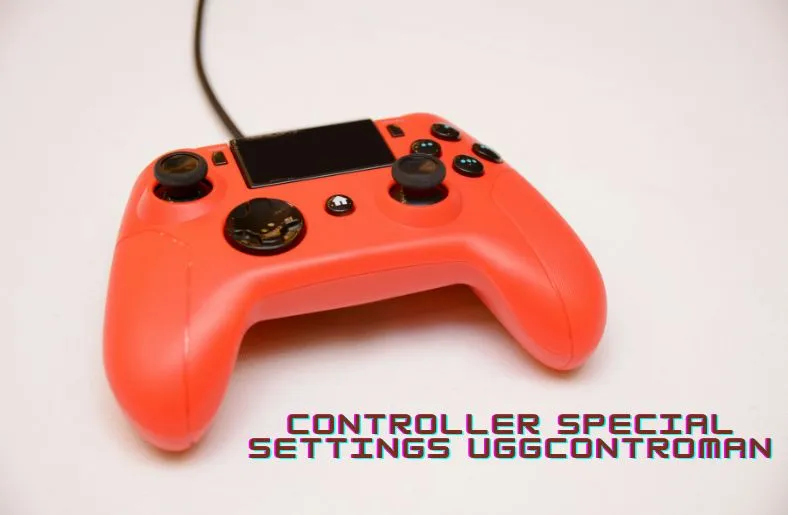In the dynamic gaming world, where every second counts, the capabilities of our controllers can tip the scales between victory and defeat. While the standard control pads provide the basic functionality required to enjoy your favourite titles, the realm of customizability is where the true potential of your gaming experience is realized. Understanding and harnessing the special settings on your gaming controller—be it a console Joy-Con, a competitive eSports device, or a meticulous PC peripheral—breathes new life into familiar gameplay. Join us as we explore the intricacies of controller customization and how it’s shaping the interactive landscapes of today and tomorrow.
What Are Special Settings and Why Do They Matter?
The Essentials of Controller Customization
When we talk about special settings, we’re referring to the advanced configurations beyond factory standards that enable you to fine-tune your controller to match your unique playstyle. From the responsiveness of your thumbsticks to the sensitivity of your triggers, these settings are the fingerprints of your gaming identity, providing an unparalleled level of personalization.
Beyond Personal Preference – Impact on Performance
Special settings aren’t just about preference; they’re about performance. A slight adjustment to your thumbstick’s sensitivity can mean the difference between landing a critical headshot or being caught off-guard. Dead zones can influence your precision, and button mapping can optimize your actions, refining the very core of your interaction with the virtual world.
A Deep Dive into Common Special Settings
Sensitivity Settings – The Precision Slider
Sensitivity settings determine how fast or slow your in-game actions respond to the physical inputs you provide. A higher sensitivity can result in quicker movements, ideal for fast-paced shooters. At the same time, a lower setting gives more precise control, which is beneficial in stealth or strategy games.
The Dead Zone Dilemma – Responsiveness and Reactivity
Dead zones refer to the minimal stick or trigger movement required for the game to register an input. Adjusting these can eliminate unneeded responsiveness and even extend the life of your controller by reducing wear on components while ensuring every subtle movement triggers your desired action.
Unleash the Full Potential – Button Mapping Magic
Button mapping allows you to assign in-game actions to different buttons or stick positions. This customization is a game-changer for players with physical disabilities, left-handed gamers, or anyone looking to optimize their control scheme to be more intuitive and efficient.
Special Settings in Popular Game Genres
FPS Finesse – Precision is Key
Special settings are indispensable tools for the fans of the first-person shooter genre. Sensitivity fine-tuning can enhance the speed and accuracy of your aim, while a properly adjusted dead zone ensures snappy and responsive actions, essential for dominating the battlefield.
RPG Ready – A Custom Control Saga
Role-playing games demand versatility and comfort. Button mapping can simplify complex skill trees and inventory management, making your actions more fluid and natural. Meanwhile, balanced sensitivity and dead zone configurations help switch between combat and exploration phases.
Racing Reshaped – The Perfect Lap
In the realm of racing, precise control is everything. Setting the right sensitivity and dead zone on your triggers can give you the edge in tight corners and straightaways. Even button mapping can completely customize intricate controls like manual gear shifting.
Tips for Personalizing Your Special Settings
Here are some tips for controller special settings uggcontroman
Start with a Blank Canvas
Begin by resetting your controller settings to default. This ensures you build your customized setup based on a neutral foundation rather than adjusting from an already-modified base.
Understand the Impact Before Tweaking
Before making any changes, consider the kind of games you play and the specific demands of their mechanics. High sensitivity, for instance, might be advantageous in one title but detrimental in another.
Gradual Adjustments Lead to Maximum Impact
Make changes incrementally and test them in real gameplay scenarios to understand how each modification affects your performance. This systematic approach allows for pinpoint accuracy in finding your ideal settings.
Record What Works for You
Keep a log of the settings you’ve tested and the ones that have proven successful. Not only will this save you from accidental settings resets, but it will also expedite the process of setting up new games in the future.
The Future of Controller Customization
Cutting-Edge Controllers
We’re witnessing the birth of more responsive, durable, and — most excitingly — more adaptive controllers. Features like haptic feedback, customizable grip patterns, and even modules to swap out for different game types are just the beginning.
AI and Machine Learning – The Next Level
Imagine controllers that learn from your play habits and automatically adjust settings to maximize your performance. These personalized interactions, powered by AI, could redefine what it means to play at your best.
The Unified Controller – A Cross-platform Dream
A controller that remains consistent across different gaming platforms, with settings that can be transferred seamlessly. This unity could create a universal gaming experience, erasing the boundaries between console and PC.
Conclusion
Optimizing your controller’s special settings isn’t just a niche hobby for customization enthusiasts; it’s a fundamental part of the modern gaming experience. It’s about tailoring your tools to empower virtual adventures, ensuring your time in-game is as rewarding and immersive as possible. By exploring the depth of what your controller can offer, you’re enhancing your performance and engaging with gaming on a more personal and impactful level.





